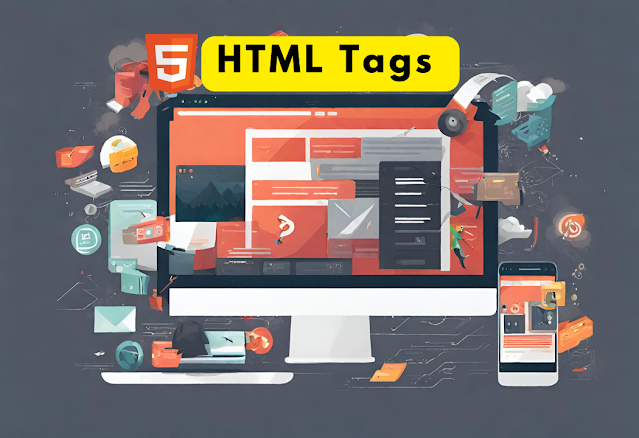HTML Tags
Elements in an HTML document are defined by HTML tags. Angle brackets (< and >) are used to write tags, and most tags are written in pairs (an opening tag and a closing tag). Before the tag name in the closing tag, there is a forward slash. These are a few typical HTML tags:
1. Paragraph Tag (<p>):
- Defines a text paragraph.
2. Heading Tags (<h1> to <h6>):
- Define the headings for the various levels. The largest and most significant element is <h1>, whereas <h6> is the smallest and least significant.
3. Anchor Tag (<a>):
- Creates hyperlinks.
4. Image Tag (<img>):
- Includes pictures.
5. List Tags (<ul>, <ol>, <li>):
- <ul> defines an unordered list.
- <ol> defines an ordered list.
- <li> defines list items.
6. Table Tags (<table>, <tr>, <th>, <td>):
- A table is defined by <table>.
- A table row is defined by <tr>.
- Table header cells are defined by <th>.
- Table data cells are defined by <td>.
7. Form Tags (<form>, <input>, <button>):
- An HTML form is defined by <form>.
- An input field (text, checkbox, radio, etc.) is defined by <input>.
- A clickable button is defined by <button>.

8. Division Tag (<div>):
- Defines an HTML document's section or division. frequently employed for stylistic and layout reasons.
9. Span Tag (<span>):
- Used for smaller, inline elements, similar to <div>.
10. Header Tags (<header>) and Footer Tags (<footer>):
- A header section is defined with <header>.
- A footer section is defined by <footer>.
These are but a handful of HTML tag examples. Numerous tags are available in HTML to help organize content and make dynamic, eye-catching websites. Additionally, tags can be customized with JavaScript and styled with CSS to improve a website's appearance and usefulness.
Labels: HTML










.png)

0 Comments:
Post a Comment
Subscribe to Post Comments [Atom]
<< Home